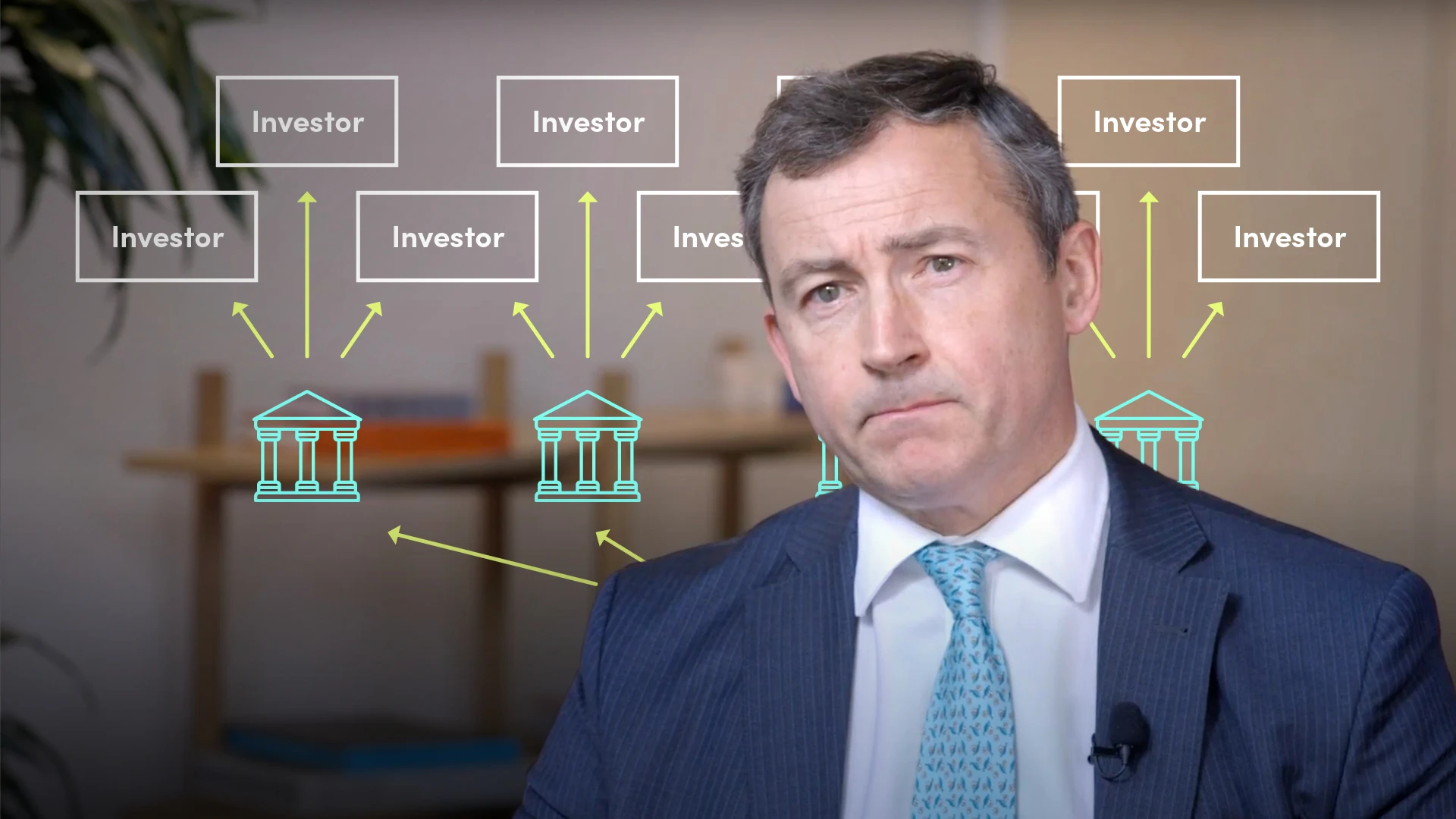
What is a Government Bond?

Tim Skeet
35 years: Debt capital markets
The government bond market is huge - at the end of 2018 it was estimated to be in the region of $66tn. In this video, Tim provides an introduction to government bonds and compares purchasing these from countries around the world.
The government bond market is huge - at the end of 2018 it was estimated to be in the region of $66tn. In this video, Tim provides an introduction to government bonds and compares purchasing these from countries around the world.
Subscribe to watch
Access this and all of the content on our platform by signing up for a 7-day free trial.

What is a Government Bond?
6 mins 56 secs
Key learning objectives:
Explain why a government might issue debt
Know why bonds in certain countries are considered to be “risk-free”
Understand how a bond works
Overview:
A government bond is a bond issued by a sovereign government. Government bonds come in a variety of formats and maturities. They can be very short-term instruments (from as little as a one-month maturity) or go out to 30-year bonds or even longer. And they can come with fixed or floating-rate interest payments, and in an inflation-linked format. Government bonds are considered to be one of the most risk-free investments.
Subscribe to watch
Access this and all of the content on our platform by signing up for a 7-day free trial.
How does a bond work?
Bonds are sold mostly in fixed-rate format, meaning they pay investors a fixed rate of interest at regular intervals; and investors receive their principal back at the end of the bond’s term. Inflation-linked or index-linked bonds protect investors against increases in inflation as their value is adjusted based on an inflation index. As mentioned, they can be issued from as little as one-month maturities to up to 30-year bonds or even longer. Bonds are one of the many ways the government issues debt to fund some project or policy.
Why does a government issue debt?
Governments raise debt to supplement revenue they receive from taxpayers, to cover budget deficits, finance specific projects or government programmes, or to repay existing debt that is due for repayment. Beyond their intrinsic value as funding instruments, government bonds also play a subsidiary utility role in capital markets by setting benchmark yield curves for that country. These provide a pricing basis for other entities in that country looking to issue debt.
Why are bonds sometimes considered “risk-free”?
Because government debt is backed by the full faith and credit of the issuing government, it is considered the safest form of debt issued by any entity in that country and it is referred to as ‘risk-free’. In practice, debt issued by the US, German and Japanese governments tends to be considered risk-free at a global level as it is very liquid, has very low default risk, is issued in global reserve currencies, and is hedgeable through foreign-exchange products or liquid government bond futures contracts.
Which countries heavily rely on debt financing?
The proportion of debt that governments have outstanding has received a lot of attention in recent years over concerns about debt sustainability. Total US Federal debt, for example, amounted to 105.3% of the size of the US economy in the last quarter of 2018. Japanese public debt, meanwhile, is just under twice the size of Japan’s economy. While investors do not tend to worry about US or Japanese debt sustainability, the same cannot be said of governments in emerging markets or non-core eurozone jurisdictions.
The Eurozone sovereign crisis that grew out of the global financial crisis of 2008 is a stark reminder of the dangers of having too much debt. It led to bailouts for Greece, Ireland, Portugal and Cyprus. Concerns about Italy’s debt sustainability are never far from the surface.
Subscribe to watch
Access this and all of the content on our platform by signing up for a 7-day free trial.

Tim Skeet
There are no available Videos from "Tim Skeet"



























